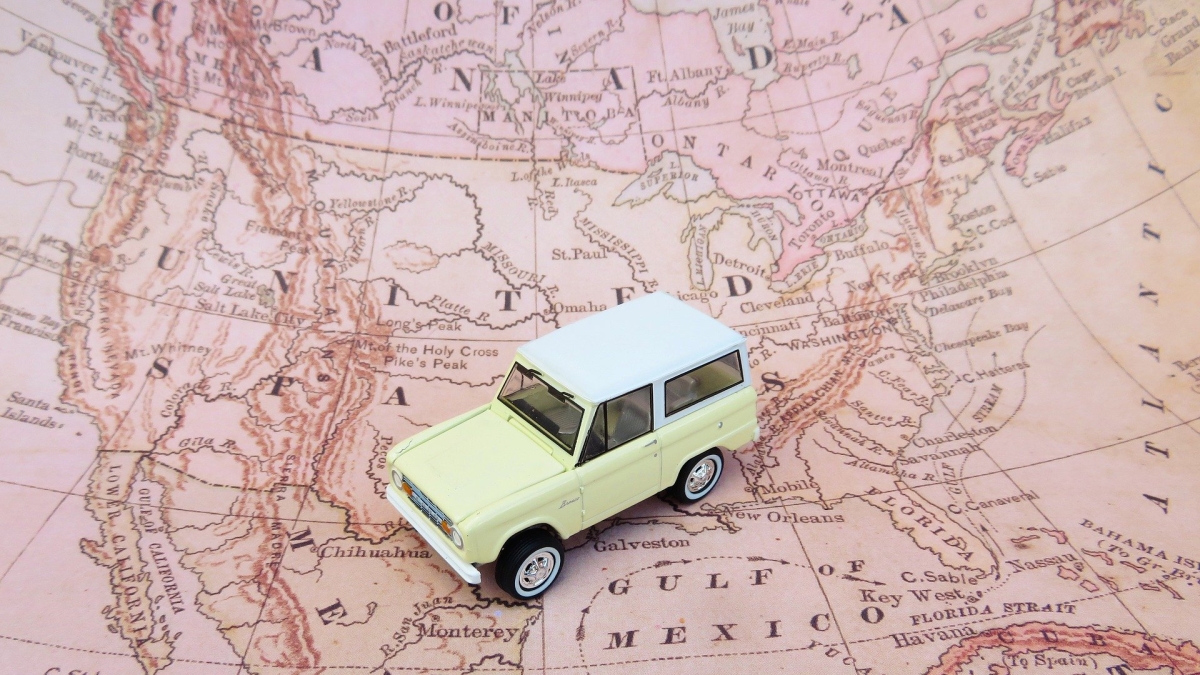Now is the time when snowbirds flock to the Southwest – and Arizona is a major hot spot for those looking for a warm winter getaway from the harsh weather up north and in the Midwest. Arizona’s sizzling desert turns into a mildly warm winter utopia with beautiful landscapes that make being outdoors especially enjoyable. Some enjoy the buzzing Phoenix metropolitan area, while others cozy up in RV desert camp spots like Quartzsite and Yuma.
These winter visits are valuable to Arizona’s economy and play a key role in the state’s revenue each year. But with a pandemic that has already damaged much of Arizona’s tourism industry, and COVID-19 cases on the rise, the state's tourism is likely to take a hard hit as we head into what would be the busiest season of the year.
Christine Vogt
Christine Vogt is the director of Arizona State University's Center for Sustainable Tourism in the School of Community Resources and Development. Vogt has done research for over two decades in the areas of recreation, parks and tourism. She spoke with ASU Now about what kind of tourism changes we can expect to see this snowbird season.
Question: Because of the pandemic, will there be a smaller population of snowbirds in Arizona for 2020–2021?
Answer: Yes, we are likely to have fewer snowbirds in the next six months in Arizona. The loss of visitors will likely come from international visitors and retirees who drive in from out of state. International visitation from Canadians, a key snowbird market, is restricted for those who would drive to Arizona and flight travel may not be attractive to some older people. Those who might travel from the East Coast or parts of the Midwest may also view drive or air travel as a risk. Statistics reported by the Arizona Office of Tourism show air travel down 52% in 2020, and the decreases have been significant in the months since March 2020. Many seniors who wintered in Arizona in previous years would have likely flown to Arizona to make the travel faster and to avoid winter driving conditions along the route. This year, those who travel to Arizona have a lot more to consider in their decision to come or stay home.
Q: What might retirees or those who can live anywhere in this COVID-19 period be considering in their decision to live in Arizona this winter?
A: Arizona offers an attractive environment for those coming to the state for the warmer winter temperatures. Many of the popular activities for the Phoenix and Tucson areas, both very popular snowbird destinations, are outdoors. Snowbirds can hike, ATV, bird, photograph, swim, golf, bicycle, garden, farmers market shop, visit vineyards, ski — just to name some of the more popular outdoor activities. Retirees are also considering their overnight options. Many retirees own homes in Arizona. Housing developments such as Sun City are an example of an open active winter option for snowbirds. Ownership may also be a mobile or RV park, which often have a range of outdoor amenities yet may be limiting (but not fully canceling) social events.
Q: What are Arizona’s outdoor travel benefits? And how do they help Arizona’s economy during a pandemic?
A: Visitors to outdoor areas have both benefits and costs. Visits to urban and rural areas get individuals and households outside, and off their computers, for fresh air, physical activity and restoration of mental health. Some visitors will buy gas, order take-out, or stop at a garden shop and spend money in the local economy. Rural or small communities greatly need these economic benefits to keep their business viable, ensure employee retainment and maintain contribution to local and state tax base. Outdoor retailers have also benefited during the pandemic. Bikes, camping gear, RVs and running shoes stores have experienced increased sales and no inventory conditions. However, many park agencies are experiencing higher costs to keep up with demand. Natural resource agencies are stretched thin to deal with increased public use and cleaning of hiking trails and campgrounds.
Q: How will land border restrictions affect those traveling from Canada and/or Mexico?
A: Unless traveling by plane, those who would like to get into Arizona will have to wait. Borders to the north and south have been sealed except for essential travel as a means of controlling COVID. Right now, these policies do not appear to be loosening. COVID is on the rise and our new president-elect is posturing that more limitations will be forthcoming to control the virus. Those in Canada and Mexico will return once the vaccine is distributed.
Q: Who do you think is more likely to reside in Arizona during the winter this year?
A: Those who own homes and can find a transportation they’re comfortable with. These retirees are likely eager to have a change of environment and spend time outside. Some who own homes may not have left from last season. For example, I live in a 55-plus neighborhood and learned that households from places like New York City, with higher levels of COVID and quarantine mandates, actually stayed in Arizona for all of 2020. Those who have always come to Arizona — meaning it is a tradition — are also likely to visit Arizona in 2020–21. Those who can drive to Arizona are more likely to arrive to the state sometime in the late fall or after the holidays. This includes snowbirds from the Pacific West states of Washington, Oregon and Idaho, (according to) a finding from the 2018 Yuma Snowbird Study the Center for Sustainable Tourism conducted.
Q: The hospitality industry was greatly impacted in the pandemic with many service workers let go. How will Arizona’s recovering hospitality industry fare this snowbird season?
A: Arizona’s tourism and hospitality industry were at a “high” in early March when COVID landed at our doorstep. Immediately the cancellation of many events occurred and visitors quickly worked to get home. Some hotels and resorts decided to close in the middle of spring until demand for their experience returned. The summer and fall seasons have rebounded slightly but overall the Arizona Office of Tourism reports a decline of 11% in tourism taxes for 2020 and a 37% decline in accommodation statistics — a combined occupancy and room rate indicator. The School of Community Resources and Development held its semester tourism career fair last week and the number of employers was down 50%. Most who attended were from out-of-state as they could take advantage of online interviewing. And although a few local employers I spoke with said they were working to bring back furloughed workers, many travel industry stakeholders are closely watching their budgets, which are often tied to hotel tax revenues that have declined in the pandemic.
If you travel
Although snowbirds and travelers should always have a medial contingency plan in place before packing up and leaving home, Vogt stresses that this is especially important now. Those looking to hit the skies or the roads should have a plan in the event they exhibit COVID-19 symptoms. Some may want to consider travel insurance in case their health insurance does not cover them out-of-state or out-of-country. And as a precaution, consider taking a COVID-19 test prior to traveling as a way to prevent exposing others to the virus.
The Centers for Disease Control also recommends that you don’t travel if you’re sick or have been around someone with COVID-19 in the past 14 days. Read more on the CDC’s travel recommendations.
Top image from Pixabay.com
More Health and medicine

New study seeks to combat national kidney shortage, improve availability for organ transplants
Chronic kidney disease affects one in seven adults in the United States. For two in 1,000 Americans, this disease will advance to kidney failure.End-stage renal failure has two primary…

New initiative aims to make nursing degrees more accessible
Isabella Koklys is graduating in December, so she won’t be one of the students using the Edson College of Nursing and Health Innovation's mobile simulation unit that was launched Wednesday at Arizona…

Reducing waste in medical settings
Health care saves lives, but at what cost? Current health care practices might be creating a large carbon footprint, according to ASU Online student Dr. Michele Domico, who says a healthier…



